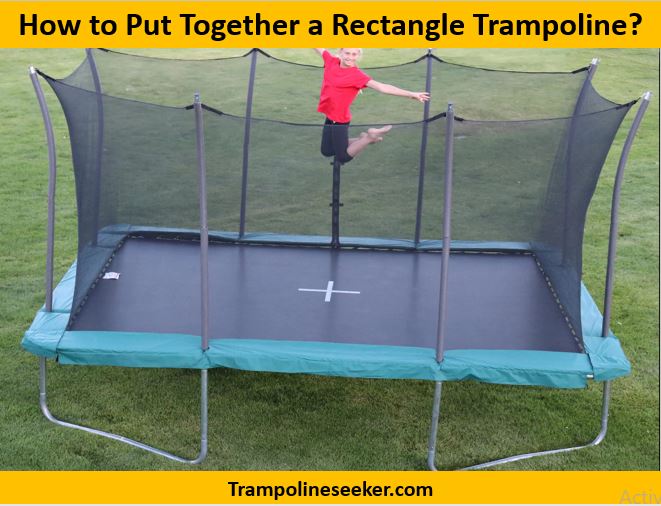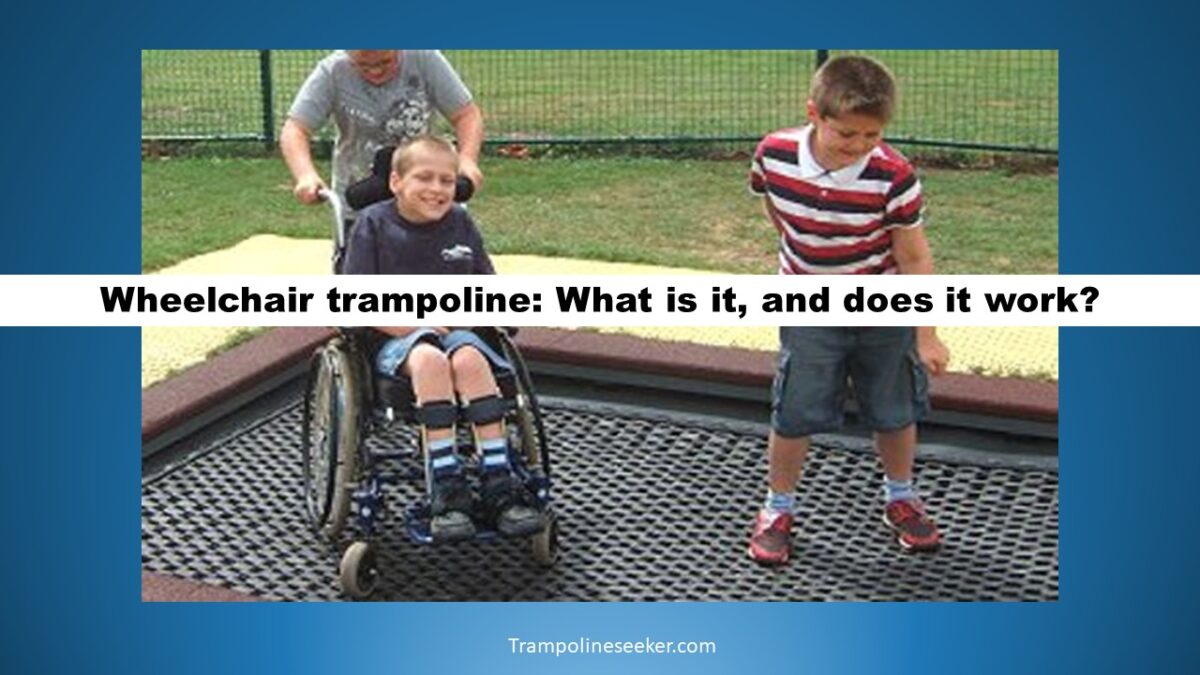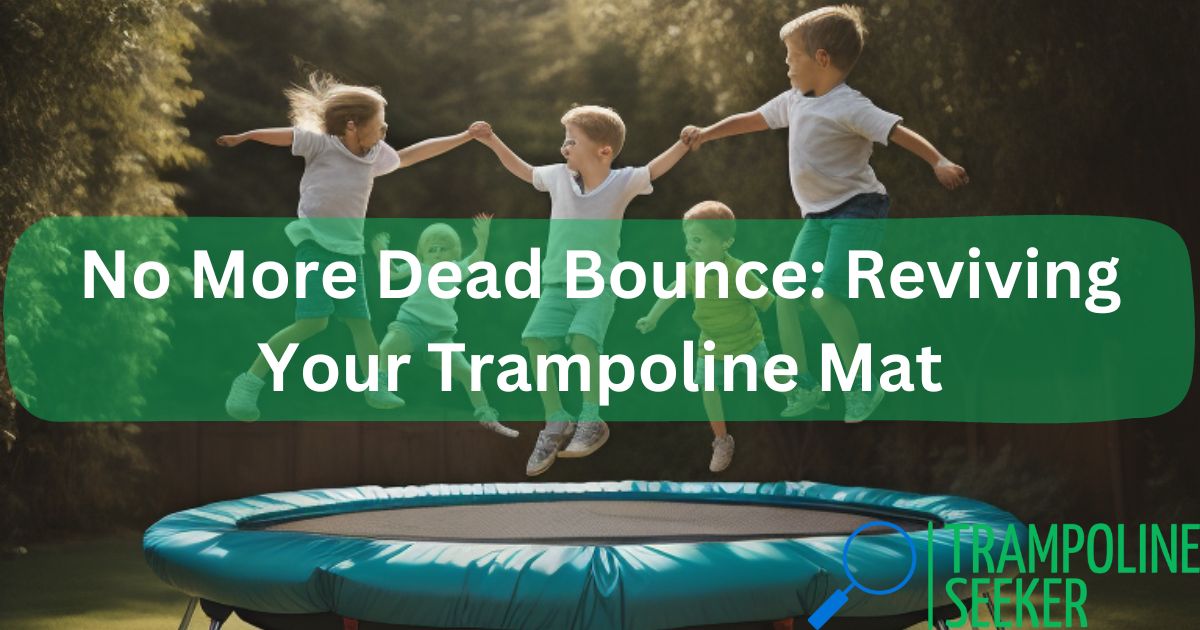Have you ever felt a sharp pain in your chest during or after bouncing on a trampoline? That uncomfortable feeling that makes you want to stop jumping and clutch your chest? You’re not alone. As fun as jumping on a trampoline can be, chest pain and discomfort is a common side effect.
As someone who loves trampolining but has experienced those post-jump chest pains myself, I decided to dig deeper to find out exactly why it happens and what you can do to prevent and treat it. After extensive personal experience and research, I’m sharing everything I learned about chest hurts when jumping on trampolines.
In short chest hurts after jumping on a trampoline mostly due to:
- Muscle strain
- Increased blood pressure
- Torn chest muscle fibers
- Heartburn
- Exercise-induced bronchospasm
Let’s look at them and other things in more detail and remedies!
Causes of Chest Pain After Jumping on a Trampoline
There are a few potential reasons you may feel chest discomfort and pain after trampolining:
1. Increased Blood Pressure
The excitement and adrenaline rush of trampoline jumping can spike your blood pressure. This rush of blood through your veins puts pressure on blood vessel walls, which can translate into chest tightness and pain. This tends to happen more often in adults than kids.
2. Muscle Strain
Bouncing up and down engages muscles throughout your body, including your chest. Using muscles in new ways can lead to delayed onset muscle soreness (DOMS) and chest strains. The impact of landing can also transfer stress to chest muscles and cause micro-tears in muscle fibers.
3. Heartburn
The jostling motion of the trampoline can bring stomach acid up into your esophagus, resulting in a burning chest pain known as heartburn. This may be more likely if you don’t wait long enough after eating to start jumping.
4. Exercise-Induced Bronchospasm
Immediately after intense aerobic activity like trampolining, some people experience chest tightness and difficulty breathing from exercise-induced bronchospasm (EIB). This refers to spasming of the small airways in the lungs in response to vigorous exertion.
5. Angina or Heart Attack
In people with underlying heart conditions, the increased cardiac demand from trampoline jumping could unmask symptoms like angina chest pain from reduced blood flow to the heart. Or in severe cases, it may even trigger a heart attack.
As you can see, chest discomfort from trampolines runs the gamut from benign muscle soreness to potentially life-threatening heart conditions. Most cases in young healthy people lean towards the former causes. But it’s still wise to understand the difference between warning signs of serious chest pain versus more run-of-the-mill soreness.
Warning Signs of Serious Chest Pain
If your post-trampoline chest pain is accompanied by any of the following red flag symptoms, seek prompt medical care to rule out a severe underlying condition:
- Crushing, squeezing, pressure, tightness in your chest
- Pain that radiates to your back, left arm, shoulder, neck or jaw
- Shortness of breath, difficulty breathing
- Lightheadedness, dizziness or feeling like you will pass out
- Nausea, vomiting, sweating
- Irregular heartbeat
For adults over 35 or anyone with a family history of heart disease, be extra vigilant about chest pains as the likelihood of cardiovascular causes increases. When in doubt, always err on the side of caution and get evaluated by a doctor. Timely treatment of heart attacks leads to better outcomes.
What to Do If You Experience Chest Discomfort After Trampolining
If you have mild to moderate chest soreness without any warning signs above, here is how to manage it:
- Stop Jumping At the first hint of chest pain or tightness, cease all trampoline activity. Give your body a break to recover. Pushing through the discomfort often makes it worse.
- Apply Ice Icing the affected area can help reduce inflammation that may be causing muscular chest pains. Use an ice pack wrapped in a towel for 10-15 minutes at a time.
- Take Anti-Inflammatories Over-the-counter meds like ibuprofen (Advil) or naproxen (Aleve) can ease swollen sore muscles that may translate into chest achiness. Follow dosage instructions.
- Gently Stretch Light stretching of chest muscles may provide relief by releasing tension and boosting blood flow. But go slowly and stop if it worsens pain.
- Monitor Symptoms If discomfort persists for more than a day or two, intensifies, or you develop any warning signs of heart issues, schedule an appointment with your doctor right away. Don’t delay seeking medical guidance.
Note: I’m not a doctor and not suggesting any medicine
How To Prevent Chest Pain When Jumping on a Trampoline
While occasional chest soreness may be unavoidable, you can take measures to reduce your risk:
👉 Warm up first – Gently stretch chest muscles before jumping to prevent strains
👉 Moderate bouncing height – Limit how high you jump to control landing impact
👉 Wear supportive bra (for women) – Minimizes breast bounce and pull on chest ligaments
👉 Use proper form – Land with soft knees bent, don’t slap or lock them straight
👉 Jump barefoot – Shoes add extra weight and traction that jars your chest more
👉 Strengthen chest muscles – Building muscle endurance protects against strains
👉 Wait 1-2 hours after eating – Prevents food and acid rising up to cause heartburn
👉 Stay hydrated – Dehydration thickens blood, forcing your heart to work harder
👉 Listen to your body – Stop at the first hint of chest discomfort
While bouncing on a trampoline will always require some exertion from chest muscles, keeping these tips in mind can help prevent aching and soreness. Pay attention to warning signals from your body. And when in doubt, get checked out by your doctor.
Can Kids Get Chest Pain on Trampolines Too?
Kids often complain of chest hurting after jumping on trampolines as well. Sudden compression of the chest on impact can strain developing muscles and tissues. Hyperventilation from excitement also provokes chest tightness.
Most cases of chest pains in children after trampolining stem from benign muscle soreness. But any breathing difficulties, wheezing, or other concerning symptoms should receive prompt medical evaluation.
Rarely, underlying respiratory illnesses like asthma could be exacerbated. Or very strenuous activity may reveal previously silent heart conditions. So don’t ignore chest pain complaints in children just because they seem otherwise healthy on the surface.
Let kids take frequent breaks during trampoline play to allow recovery. Proper supervision and adherence to age/weight limits for safe use reduces overexertion too. When in doubt, a pediatrician check-up never hurts either!
FAQs About Chest Hurts When Jumping On Trampoline
If you still have questions about chest pain and trampoline use, here are answers to some frequently asked questions:
Does trampolining increase blood pressure?
Yes, all exercise transiently increases blood pressure and heart rate. The rapid bouncing motion of trampolines in particular can spike BP. Over time though, regular trampolining should lower your resting blood pressure.
Can trampolining cause a heart attack?
Trampoline activity does increase cardiac demand. In those with pre-existing heart disease, poorly controlled blood pressure, or who are deconditioned, the stress could unmask symptoms or possibly trigger a heart attack. The risk likely remains low in most healthy people.
Why does my child’s chest hurt after jumping on the trampoline?
Kids often get chest pain from muscle soreness, strains, bruising, or simple hyperventilation and excitement on trampolines. Most cases are harmless. But any breathing difficulty warrants prompt medical evaluation to rule out rare heart/lung conditions.
How long does trampoline-related chest pain last?
For muscle soreness, chest pain usually resolves within 1-3 days with rest, ice, OTC meds. Lingering pain >1 week or that occurs with other symptoms necessitates a doctor visit to check for other causes like bone/ligament injuries, lung issues, or heart problems.
Can trampolining help strengthen chest muscles?
Yes! With proper execution, regular trampolining delivers an excellent cardio and strength training effect. Over time, chest muscle endurance improves. But work up gradually to avoid overuse injuries. Warm up, limit session length and take ample rest days.
The Takeaway on Chest Hurts When Jumping on Trampolines
Bouncing on a trampoline taxes multiple muscle groups, including chest muscles, which can lead to occasional soreness and pain. Serious causes are unlikely in the young and otherwise healthy. But unusual symptoms warrant medical evaluation to be safe. With proper precautions and awareness of warning signs, trampolines can be enjoyed safely.
Articles You May Like to Read:













